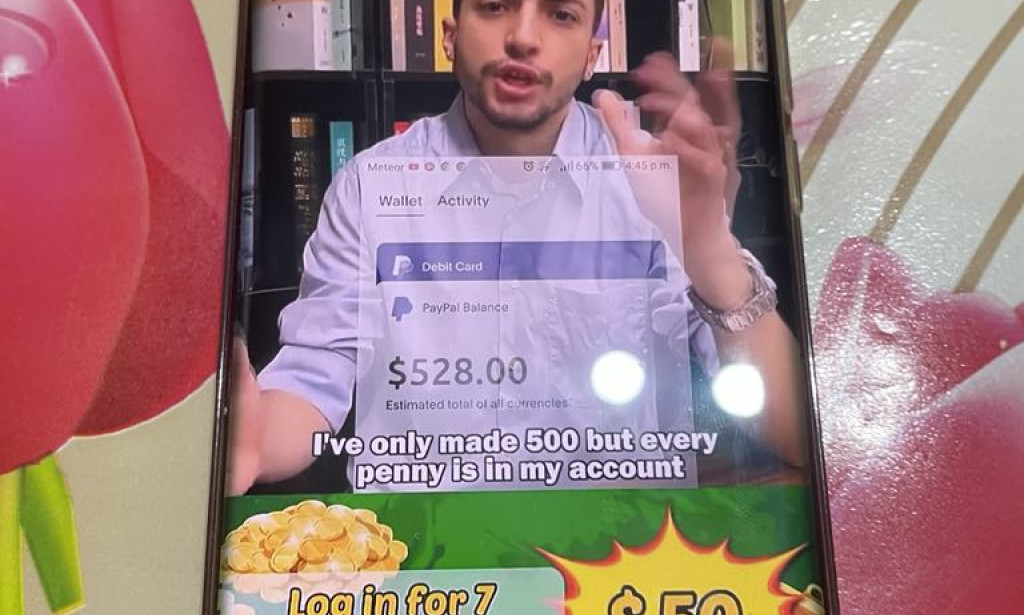Maya Treasure App Review: Legit Money or a Deceptive Ad-Watching Scam?
The allure of "Play-to-Earn" (P2E) games is powerful. The promise is simple and seductive: play a fun game on your phone and earn real, life-changing money. One such app that has emerged in this space is Maya Treasure, a slot machine game with a vibrant Mayan theme that claims to offer massive cash payouts, with thresholds as high as $500 or $1,000.
However, a closer investigation and numerous user experiences, including the one that prompted this review, paint a grimly familiar picture. This deep dive will analyze Maya Treasure, investigate its operations, identify its glaring red flags, and deliver a final verdict on whether it is a legitimate opportunity or a sophisticated scam designed to waste your time.

What is Maya Treasure? The Seductive Promise
On the surface, Maya Treasure presents itself as a straightforward and enjoyable mobile game. Users spin a virtual slot machine adorned with Mayan artifacts, temples, and treasures. With each spin, players can win in-game currency which, the app claims, translates directly to real US dollars.
The initial experience is often exhilarating. New players report winning large sums of virtual cash with incredible frequency. Gift boxes appear, showering the user with bonuses of $20, $50, or even more. The balance in your in-app wallet skyrockets, and the minimum cashout threshold of $500 or $1,000 seems tantalizingly within reach. This initial phase is expertly designed to get you hooked and invested in the game.

The Inevitable Trap: A Pattern of Deception
Based on direct user testimony, the Maya Treasure experience follows a predictable and manipulative pattern, broken down into three distinct stages.
Stage 1: The Honeymoon Period
When you are far from the cashout threshold, the game is incredibly generous. Almost every spin or bonus box yields a significant amount of money. This rapid progress creates a powerful sense of excitement and belief that you are on the verge of a major payday. The psychological goal here is to secure your engagement and investment of time.
Stage 2: The Diminishing Returns Grind
As your earnings approach the minimum withdrawal amount—for example, once you hit around $480 on a $500 threshold—the game's algorithm dramatically changes. The generous payouts vanish. Suddenly, gift boxes that once contained over $50 now consistently award a minuscule $0.01 or, in many cases, $0.00. Progress grinds to a halt. Reloading the game or clearing the cache does nothing to change this; the reward system is intentionally throttled. This is a deliberate tactic to prolong your gameplay and maximize your exposure to advertisements.
Stage 3: The Moving Goalposts
After an arduously long time spent clicking and watching ads to earn those final few dollars, you finally reach the cashout threshold. You eagerly navigate to the withdrawal page, enter your payment details (e.g., PayPal), and hit "Submit."
This is where the final, most infuriating trap is sprung. Instead of confirming your payment, the app presents a new, previously unmentioned condition: "You must watch 100 advertisements to activate your order and cash out."

This is the checkmate moment for the developers. They know that many users, having already invested so much time, will reluctantly agree to watch the ads. Others will simply give up in frustration. In either scenario, the developer wins, and the user receives nothing. As confirmed by the user who shared their story, even after fulfilling this requirement, no payment is ever sent.
Red Flags: Why Maya Treasure is a Scam
The entire operation of Maya Treasure is built on a foundation of classic red flags that are common among fraudulent "money-making" apps.
-
Unrealistically High and Unsustainable Payouts: No legitimate app developer can afford to pay users hundreds or thousands of dollars for simply playing a slot game. The ad revenue generated from a single user is mere cents or, at most, a few dollars. The business model is fundamentally impossible.
-
Anonymous CEO and Phantom Company: A thorough search for the CEO, parent company, or development team behind Maya Treasure yields no credible results. Legitimate companies have a public presence, a verifiable address, and identifiable leadership. Scam apps are almost always published by anonymous, untraceable entities with generic names on app stores to avoid accountability and legal action.
-
The "Watch Ads to Cash Out" Hurdle: This is perhaps the most blatant red flag. A legitimate company pays you for a service or for winning a prize; they do not demand more labor from you after you have already met the conditions. This tactic exists for one reason only: to squeeze the maximum possible ad revenue from you before you inevitably realize you will never be paid.
-
No Verifiable Payment Proofs: While the app might show fake pop-ups of "other users" cashing out, there are no independent, verifiable payment proofs to be found online from real users. The internet is instead filled with complaints and warnings identical to the experience described here.
-
Manipulative Earning Algorithm: The system of "diminishing returns" as you near the payout threshold is a calculated, deceptive practice designed to exploit human psychology and the "sunk cost fallacy" (the feeling that you can't quit because you've already invested so much time).
Source of Income: You Are the Product, Not the Customer
The source of income for Maya Treasure is not a mystery. It is 100% derived from advertising revenue.
Every time you spin the slots and an ad plays, every time you open a gift box and are forced to watch a 30-second video, and especially when you agree to watch the final 100 ads, the developers are getting paid by their advertising partners.
You are not their customer. The advertisers are their customers. You, the user, are the product being sold. Your time, attention, and data are being monetized. The promise of a $1,000 payout is simply the bait used to get you to watch an endless stream of ads, from which the developers profit directly.

The Verdict: Maya Treasure is a 100% Fake Scam
Based on overwhelming evidence and analysis of its operational model, Maya Treasure is unequivocally a fake app and a deceptive scam. It has no intention of ever paying its users. Its sole purpose is to function as an ad-revenue-generating machine by exploiting users' hope and time.
Downloading and playing Maya Treasure will result in:
-
Wasted time and mobile data.
-
Frustration and disappointment.
-
Sharing your device data with an anonymous entity.
-
You will not be paid.


Star Rating Comparison: Scam App vs. Legitimate Platform
| Feature | Maya Treasure (Scam) | Legitimate Platform (e.g., Lodpost) |
| Payout Reliability | ⭐☆☆☆☆ (Zero) | ⭐⭐⭐⭐☆ (Generally Reliable) |
| Transparency | ⭐☆☆☆☆ (Anonymous) | ⭐⭐⭐⭐☆ (Clear Model, Public) |
| Earning Method | Deceptive & Manipulative | Clear & Defined (e.g., CPM) |
| Threshold Realism | Unrealistically High | Achievable & Realistic |
| User Support | Non-existent | Available & Responsive |
| Primary Goal | Generate Ad Revenue for Devs | Provide a Service / Share Revenue |
Alternative: A Look at Lodpost
For those looking for legitimate ways to earn online, the user suggested an alternative: Lodpost. Let's review the claims.
What is Lodpost?
Lodpost presents itself as a revenue-sharing platform for writers and content creators. It allows individuals to sign up for free, write articles, and get paid based on the number of views (reads) their articles receive.
How Does it Claim to Work?
-
Sign-up Bonus:
$0.25 -
Earning Model: Based on CPM (Cost Per Mille), meaning you earn a certain amount of money for every 1,000 valid views on your articles.
-
Investment: None required. It's free to join and write.
-
Minimum Withdrawal:
$10 -
Payment Methods: PayPal, Cryptocurrency (like Bitcoin), and Bank Transfers.
-
Registration Link:
lodpost.com/ref/amica
Is Lodpost Legit?
Based on the description, Lodpost's model is far more transparent and sustainable than that of Maya Treasure.
-
Clear Revenue Source: The income comes from advertising and sponsorships placed on the website alongside the articles. The platform then shares a portion of this revenue with the writers who create the content that attracts readers. This is a standard and proven business model used by countless blogs, news sites, and platforms like Medium.
-
Realistic Threshold: A
$10minimum withdrawal is reasonable and achievable, unlike Maya Treasure's$500or$1,000. -
Verifiable Activity: Since it's a content platform, the legitimacy can be gauged by the quality of the articles, the activity on the site, and by searching for payment proofs from other writers. The claim that payment proofs are available on their site is a positive sign of transparency.
While any online earning opportunity requires due diligence, the business model described for Lodpost is legitimate in principle. It rewards tangible work (writing content) with a share of the revenue that content generates, which stands in stark contrast to Maya Treasure's model of false promises designed to farm ad views.


You must be logged in to post a comment.